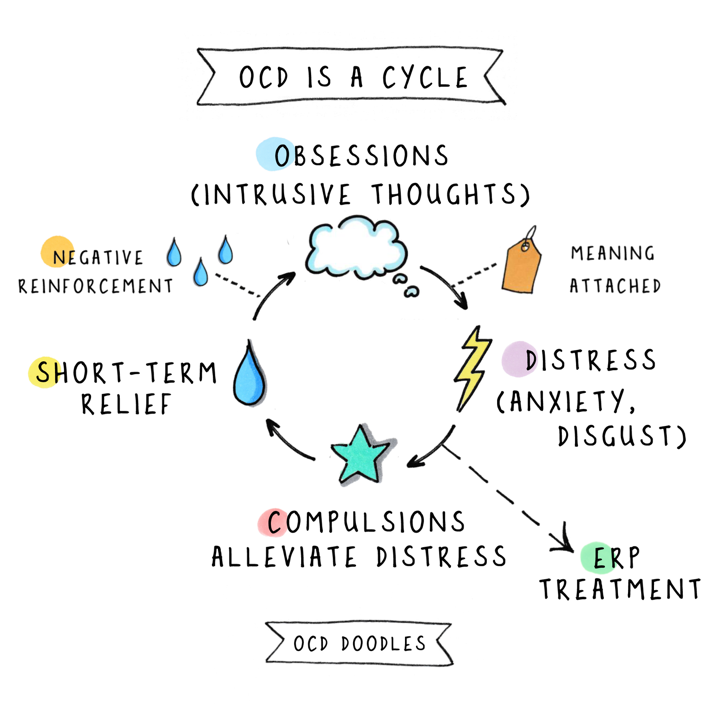What is OCD?
OCD is a painful and debilitating mental health disorder, which makes us feel that our minds are our own worst enemies. We feel that we can’t escape the distressing thoughts, feelings and behavior patterns that feel like an attack on our core sense of self and our world. OCD is made up of the experience of triggers, obsessions and compulsions.
Triggers are any experience in the world, or our body and mind, that activates the OCD pattern
Obsessions are thoughts (words or images), sensations, feelings and impulses that are intrusive, unwanted, repetitive and confusing. They come with a strong sense of urgency to take action to relieve them. They can cause a broad range of emotional responses like anxiety & fear, disgust, sadness, guilt and shame.
Compulsions are repetitive behaviors or mental acts in response to obsessions. They function to try to reduce the distress or doubt, difficult emotions (like anxiety, shame, disgust, discomfort) or are aimed at preventing harm. They may reduce the unwanted experiences in the short term but they fail in the long run. This temporary effect re-enforces the OCD cycle of trigger > obsession > unpleasant emotion, doubt, discomfort > compulsion > some relief (varying degrees and frequency of relief). They start to take more and more time and energy and disrupt important areas of people's lives.
Illustration by UK OCD advocate OCD Doodles.
OCD obsessions centre around this pattern and are expressed through different themes. Common examples of these subtypes include:
Contamination – an excessive concern with harm caused through germs, bodily fluids, chemicals. This theme can be centred around both anxiety and the feeling of disgust.
Checking – excessive concern with responsibility to prevent harm or leave things as they should be (lights, water, power, cooking, cars, windows etc)
Just right – strong concerns about symmetry, sequences or exactness and the search for the feeling that things are done ‘just right’
Harm – excessive fear of committing violent acts to self or others
Sexual themes – excessive intrusive thoughts about sexual orientation, sexual appropriateness, sexual desire towards inappropriate people etc
Moral scrupulosity – excessive concern with performing moral behaviour and being certain things have been done morally
Relationship – excessive concern with whether relationship is right
Sensorimotor – excessive concern and hyperawareness on involuntary processes, sensations, sensory awareness, thinking etc these can be neutral or aversive (i.e. blinking or experience of tightness in breathing)
Existential – excessive concern with solving philosophical questions about life
Anything that fits the pattern of obsession and compulsion i.e. this process can latch onto anything, for example the topic can be influenced by the culture that people are in. Other common themes include worrying one is a peadophile, obsessing over one’s religion, worrying one is a racist, doubting one’s memories of events (false memories/real event OCD), emotional contamination (worrying people are contaminated), and as well as an infinite amount of other themes of OCD.
The themes provide a language to talk about OCD and to map the triggers, obsessions and compulsions. They can provide a sense of connection with other people who experience the same theme. Sometimes it can identify nuance in treatment, for example the approach to Exposure and Response Prevention Therapy. However, it is important to emphasise that the pattern is the important part of OCD, the themes all follow the same OCD cycle.
All the best,
Jonny Say

